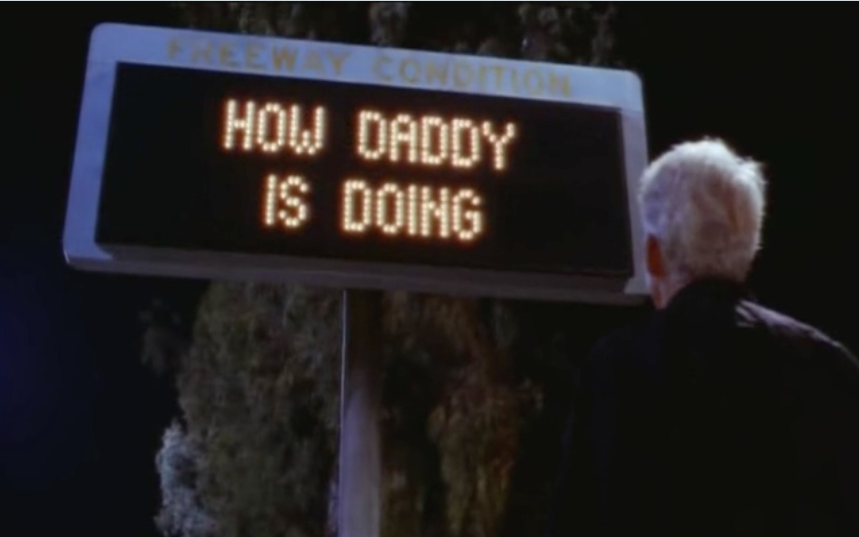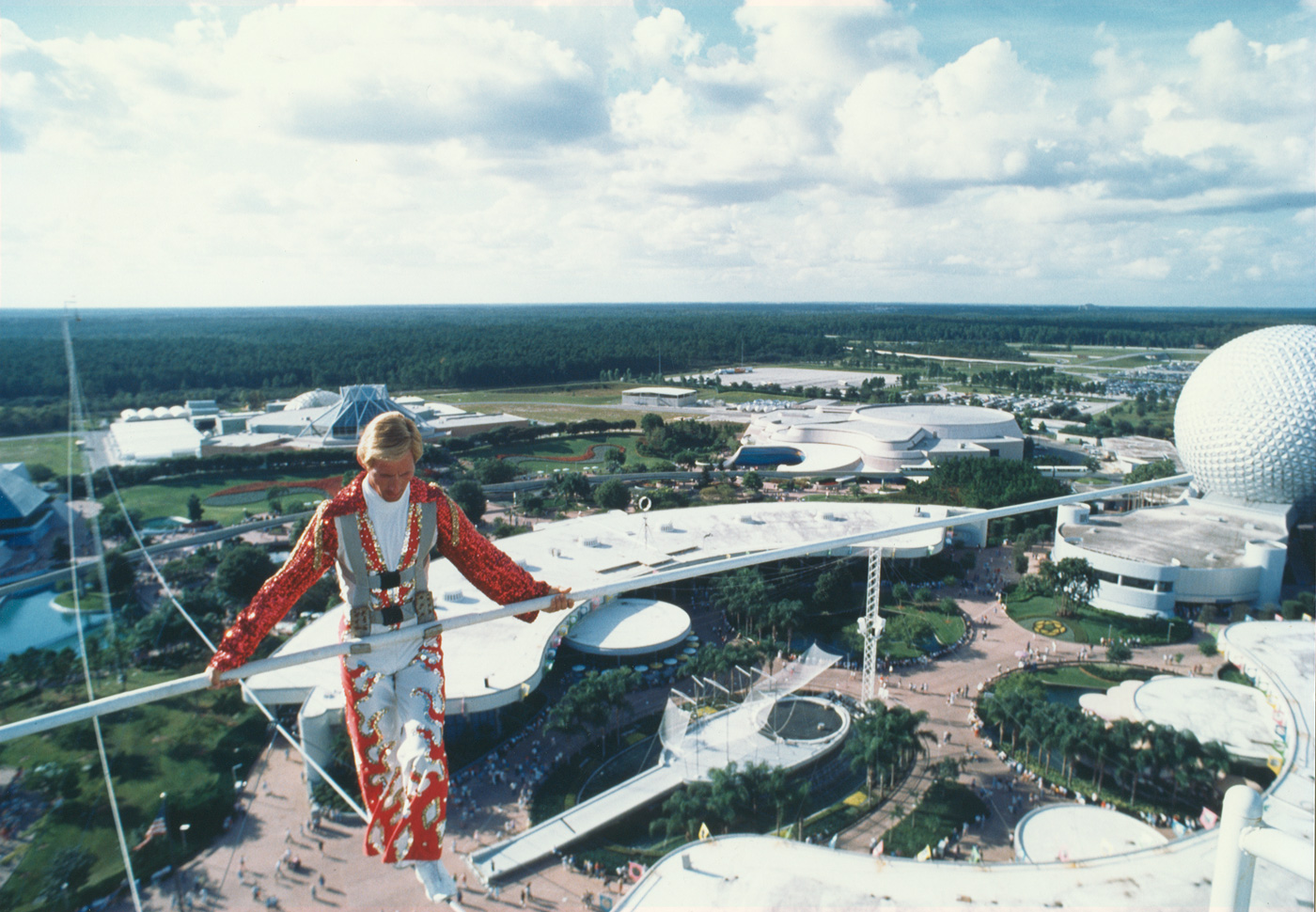https://twitter.com/BenWszalek/status/1081061206432059394?s=20
Insta
https://www.instagram.com/p/BsGg1D7A-dR/
DisneyQuest
“A writer needs a pen, an artist needs a brush, but a filmmaker needs an army” ― Orson Welles
Mobile Test
Can I make a blog post from the WordPress app? We are about to find out.
Is This Thing On?
For better or worse (okay, much worse), True Detective season two actively fought against what made the first season of HBO’s crime drama such a profound hit. Gone were the post-mortem interrogations, the dueling timelines, and the cultish murder mystery; existential (and literal) crises of masculinity were all that remained to signify that this was a Nic Pizzolatto joint. But lacking a compelling framework or narrative, those elements no longer read as a throwback to or deconstruction of old archetypes – instead, they felt heavy-handed at best.
Perhaps it’s fitting, then, that the latest installment of True Detective opens with Mahershala Ali’s Detective Hays recalling the day when the case at the heart of this season began: “I remember it was the day Steve McQueen died,” he says. McQueen’s particular aspirational brand of masculinity didn’t die with him, of course, but the fact that this date is significant to Hays offers plenty of context for the world in which he lives – be it the one around him, or the one that exists in his head. Where the first season was divided between “past” and “present,” season three is actually split between three crucial periods in Hays’ life: 1980, when Hays and his partner, Roland West (Stephen Dorff), investigate the disappearance of Will and Julie Purcell in Northwest Arkansas; 1990, when Hays and West are brought in for additional questioning regarding the case, which has been reopened due to a remarkable development; and some 20 years later, when an elderly Hays is being interviewed about the case for a true crime series (the host of which is played by Sarah Gadon).
From the very first episode, “The Great War and Modern Memory,” it’s apparent that this season shares much in common with the first: The multiple time periods, the ruminations on time as an abstract and almost supernatural force, the cultish aspects to the central mystery, the interrogations of Hays and West a decade after the fact, and Hays’ reckoning with his own masculinity – his inability to effectively solve the case becomes a symbol of deep-seated impotence. These familiar elements might read as a cowardly capitulation to the viewership, but season three is impressive in its depth and complexity – it’s almost as if Pizzolatto saw HBO’s dare and raised them, and succeeded in delivering more than what was asked.
But he wasn’t alone; Pizzolatto had an entire army of talent for season three, including Jeremy Saulnier (who directed a couple of episodes and executive produced the series), the great David Milch (who is credited with helping write at least one episode), and a ferociously talented ensemble anchored by Mahershala Ali – playing a role originally written for a white man. Ali is breathtaking, giving us a trifecta of performances that grow increasingly complex with each passing decade. By the time Hays is in his seventies, his memory has been compromised; although it’s not made explicit, it appears that he’s suffering from Alzheimer’s, the effects of which are essentially erasing his life – including the memories of his wife, Amelia Reardon. Played by Carmen Ejogo, Amelia is an English teacher who writes a book about the Purcell case, but Hays feels threatened by her zealous interest. The elderly Hays is haunted – quite literally – by the specter of Amelia, who mercilessly taunts him about the slippery nature of time.
Know More Than You Should
In the mid-21st century, crop blights and dust storms threaten humanity’s survival. Joseph Cooper, a widowed engineer and former NASA pilot, runs a farm with his father-in-law Donald, son Tom, and daughter Murph. Living in a post-truth society, Cooper is reprimanded for telling Murph that the Apollo missions did occur; he encourages her to carefully observe and record what she sees. They discover that strange dust patterns on Murph’s bedroom floor, which she first attributes to a ghost, result from gravity variations and translate into geographic coordinates. These lead them to a secret NASA facility headed by Cooper’s former supervisor, Professor John Brand, who explains that 48 years earlier a wormhole appeared near Saturn, opening a path to a distant galaxy with twelve potentially habitable planets located near a black hole named “Gargantua“. Twelve volunteers had previously traveled through the wormhole to individually evaluate the planets, and astronauts Miller, Edmunds, and Mann reported positive results. Professor Brand explains he has conceived two plans to ensure humanity’s survival. Plan A involves developing a gravitational propulsion theory to propel a mass exodus, while Plan B involves launching the Endurance spacecraft with 5,000 frozen human embryos to colonize a habitable planet.
Cooper is recruited to pilot the Endurance. When Murph refuses to see him off, he leaves her his wristwatch to compare their relative time when he returns. The crew consists of Cooper, the robots TARS and CASE, and scientists Dr. Amelia Brand (Professor Brand’s daughter), Dr. Romilly, and Dr. Doyle. After traversing the wormhole, Romilly studies the singularity while Cooper, Doyle and Amelia descend in one of four landing crafts to investigate Miller’s planet, an ocean world. After landing in knee-high water and finding only wreckage from Miller’s ship, a gigantic tidal wave kills Doyle and delays departure. Due to the proximity of the black hole, time is severely dilated. As a result, 23 years have elapsed for Romilly on Endurance by the time Cooper and Brand return. Edmunds’ planet has slightly better telemetry, but Mann is still broadcasting from his, so Cooper rules they use their remaining fuel to reach Mann’s planet. En route, they receive messages from Murph, now a scientist, who has learned from Professor Brand on his deathbed that Plan B was his only real plan; Plan A required unattainable data from within a black hole to be successful. On Mann’s frozen planet, the Endurance crew revive Mann from cryostasis. He assures them colonization is possible, despite an extreme environment. On an excursion, Mann attempts to kill Cooper and reveals that he broadcast falsified data in the hope of being rescued. He steals a lander and heads for the Endurance. While a booby trap set by Mann kills Romilly, Amelia rescues Cooper with a second lander and they race to the Endurance. Mann is killed in a failed manual docking operation, severely damaging the Endurance. After a difficult docking maneuver, Cooper regains control of Endurance.
Miller’s planet orbiting Gargantua.
With insufficient fuel to reach Edmunds’ planet, they use a slingshot maneuver so close to Gargantua that time dilation adds another 51 years. In the process, Cooper and TARS jettison themselves to save weight and ensure Endurance can reach Edmunds’ planet. Slipping through the event horizon of Gargantua, they eject from their respective landers and find themselves in a tesseract, possibly constructed by humans of the far future. Across time, Cooper can see through the bookcases of Murph’s old room on Earth and weakly interact with its gravity. Realizing that he is now Murph’s “ghost”, he manipulates the second hand of the wristwatch he gave her, transmitting quantum data via Morse code that TARS collected from inside the event horizon. Cooper and TARS are ejected from the tesseract. Cooper awakes on a space habitat orbiting Saturn. He reunites with his daughter, now an old woman nearing death. Using the quantum data, she was able to develop the gravitational propulsion theory for Plan A, enabling humanity’s exodus and survival. She reminds Cooper that Amelia is out there alone. Cooper and TARS take a spacecraft to rejoin Amelia and CASE, who are beginning a human colony on Edmunds’ habitable planet.
Test Post!
Lorem Ipsum is simply dummy text of the printing and typesetting industry. Lorem Ipsum has been the industry’s standard dummy text ever since the 1500s, when an unknown printer took a galley of type and scrambled it to make a type specimen book. It has survived not only five centuries, but also the leap into electronic typesetting, remaining essentially unchanged. It was popularised in the 1960s with the release of Letraset sheets containing Lorem Ipsum passages, and more recently with desktop publishing software like Aldus PageMaker including versions of Lorem Ipsum.



